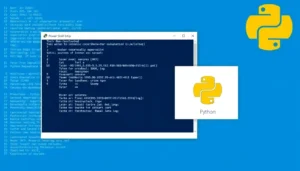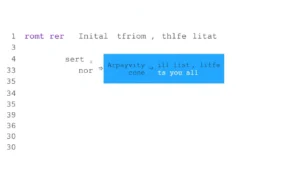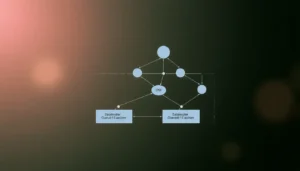Financial Literacy: A Practical Guide to Personal Finance
- THE MAG POST

- Sep 6
- 4 min read

Financial Literacy reshapes how people think about money in daily life, turning impulse into informed choice. The most durable wealth comes from disciplined budgeting, mindful saving, and clear financial goals, practices that extend beyond numbers to everyday decisions. Financial Literacy, approached steadily, becomes a lens for shaping future security.
Across households and markets, practical literacy reduces fear and increases agency in financial matters. In this piece, we explore foundations, mistakes to avoid, and steps to elevate your personal finances with deliberate, evidenced strategies. With Financial Literacy as a compass, readers can navigate debt, emergencies, and growth with steadier hands.
Foundations of Financial Literacy
Foundations of financial literacy shape how we manage money day-to-day and plan for the future. A practical grasp of budgeting, saving, and debt awareness creates a resilient financial life. Financial Literacy, approached steadily, becomes a lens for shaping future security.
Budgeting Essentials
Budgeting is more than tallying income and expenses; it's a framework for priorities. A simple method—tracking recurring costs, setting targets, and reviewing monthly outcomes—reduces stress and frees up resources for goals.
Tools and techniques such as zero-based budgeting, the 50/30/20 rule, and envelope strategies offer practical paths. Over time, you can tailor these to your income pattern and obligations, turning numbers into meaningful choices rather than vague aspirations.
Emergency Fund and Risk Management
Building an emergency fund cushions shocks: medical bills, job loss, or unexpected repairs. A common rule is to cover three to six months of essential expenses to weather sudden changes without derailing long-term plans.
Diversifying risk through insurance, contingency planning, and debt management reduces vulnerability. Financial literacy helps people decide when to self-insure versus insure and how to calibrate risk across income levels.
Smart Saving and Spending Habits
Smart saving and spending habits turn intention into habit. Practical literacy lowers anxiety around money and empowers decisive actions aligned with values and goals.
Automation and deliberate practice transform tiny contributions into meaningful growth. Pair automatic transfers with periodic reviews to ensure alignment with evolving life circumstances and targets.
Automation and Habit Formation
Automating transfers to savings removes friction; it makes growth automatic and predictable. Start with a comfortable monthly amount and increase as income or needs shift, reinforcing the habit over time.
Pair automation with regular check-ins to guard against complacency. This keeps your plan responsive to changes in income, expenses, or priorities while preserving momentum.
Spending Decisions that Count
Mindful spending requires clear criteria for value, not deprivation. Distinguish essentials from discretionary purchases and revisit these categories as circumstances change.
Track purchases, categorize needs versus wants, and evaluate long-term consequences of recurring costs. Small, intentional adjustments compound into substantial financial resilience.
Investing Basics for Everyday Readers
Investing is not reserved for experts; it hinges on understanding risk, time, and costs. A calm, informed approach helps non-specialists participate meaningfully in wealth-building.
We explore risk vs. return, diversification, and the role of fees. For beginners, simple index funds provide broad exposure, with complexity added gradually as comfort grows.
Understanding Risk and Return
Risk and return are linked: higher potential gain usually brings higher volatility. Diversification across assets mitigates idiosyncratic shocks and smooths performance over time.
Be mindful of fees, tax implications, and the impact of compounding. Start with simple, low-cost vehicles and expand as your comprehension deepens.
Time Horizon and Compounding
Time is a powerful ally thanks to compounding; even modest early investments can grow substantially over years. A longer horizon justifies exposure to a broader set of assets and a steady saving cadence.
Set long horizons, rebalance periodically, and avoid high-cost traps that erode returns. Consistency often beats trying to outsmart markets in the short run.
Practical Pathways to Mastery
No single guide guarantees mastery, but a structured plan accelerates progress. A clear path combines theory, practice, and reflection to turn knowledge into durable skills.
Layout a personal curriculum: core concepts, applied budgeting exercises, simulated investing, and ongoing evaluation. Regular feedback loops strengthen retention and translate learning into real-world impact.
Learning Resources
Curate a balanced mix of authoritative books, reputable courses, and hands-on budgeting experiments. Complement theory with real-world practice to reinforce understanding and build confidence.
Use spaced repetition, practice scenarios, and periodic reviews to cement concepts. Tracking milestones makes progress tangible and encourages sustained effort.
Avoiding Common Pitfalls
Beware debt traps, lifestyle creep, and overconfidence in timing the market. These pitfalls erode gains and undermine consistency.
Focus on sustainable habits, verify information with trusted sources, and resist quick-fix schemes. A disciplined approach delivers steadier growth than bold but unsystematic bets.
Key Takeaways
Financial Literacy is the seed that grows into prudent money management. By grounding decisions in budgeting, saving, and measured investing, readers build resilience, reduce stress, and create lasting financial security. The path is incremental, but the cumulative effect is transformative.
Aspect | Overview |
SEO Keyphrase | Financial Literacy |
Core Topics | Budgeting, Saving, Investing |
Benefits | Better decisions, resilience |
Next Steps | Set up a budget; automate savings |
Target Audience | Beginners to intermediate learners |






















































Comments